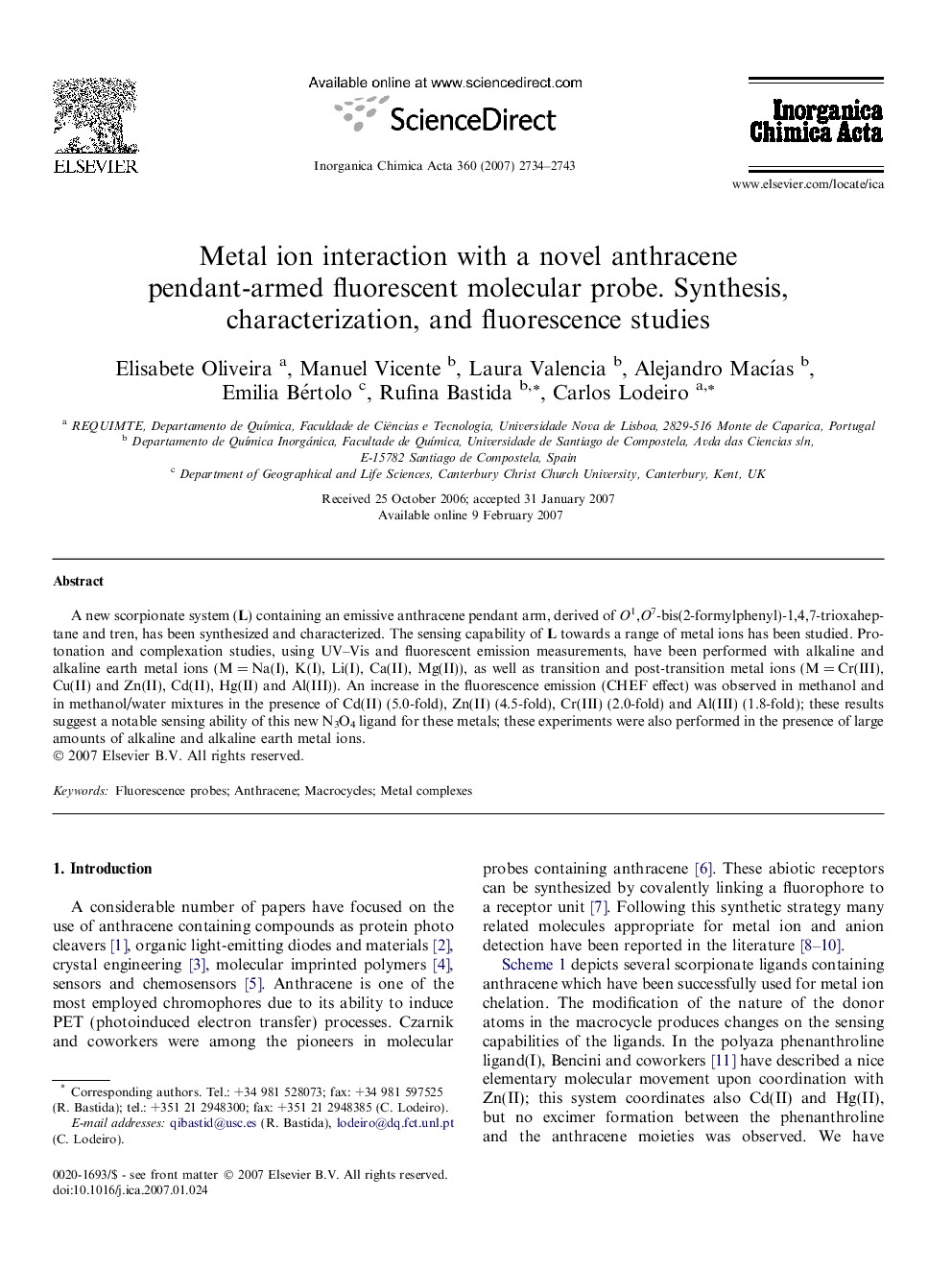| Article ID | Journal | Published Year | Pages | File Type |
|---|---|---|---|---|
| 1309649 | Inorganica Chimica Acta | 2007 | 10 Pages |
A new scorpionate system (L) containing an emissive anthracene pendant arm, derived of O1,O7-bis(2-formylphenyl)-1,4,7-trioxaheptane and tren, has been synthesized and characterized. The sensing capability of L towards a range of metal ions has been studied. Protonation and complexation studies, using UV–Vis and fluorescent emission measurements, have been performed with alkaline and alkaline earth metal ions (M = Na(I), K(I), Li(I), Ca(II), Mg(II)), as well as transition and post-transition metal ions (M = Cr(III), Cu(II) and Zn(II), Cd(II), Hg(II) and Al(III)). An increase in the fluorescence emission (CHEF effect) was observed in methanol and in methanol/water mixtures in the presence of Cd(II) (5.0-fold), Zn(II) (4.5-fold), Cr(III) (2.0-fold) and Al(III) (1.8-fold); these results suggest a notable sensing ability of this new N3O4 ligand for these metals; these experiments were also performed in the presence of large amounts of alkaline and alkaline earth metal ions.
Graphical abstractA new scorpionate system (L) containing an emissive anthracene pendant arm has been synthesized and characterized. An increase in the fluorescence emission (CHEF effect) was observed in methanol and in methanol/water mixtures in the presence of Cd(II), Zn(II), Cr(III) and Al(III). A CHEQ effect was observed for Cu(II) and Hg(II).Figure optionsDownload full-size imageDownload as PowerPoint slide
